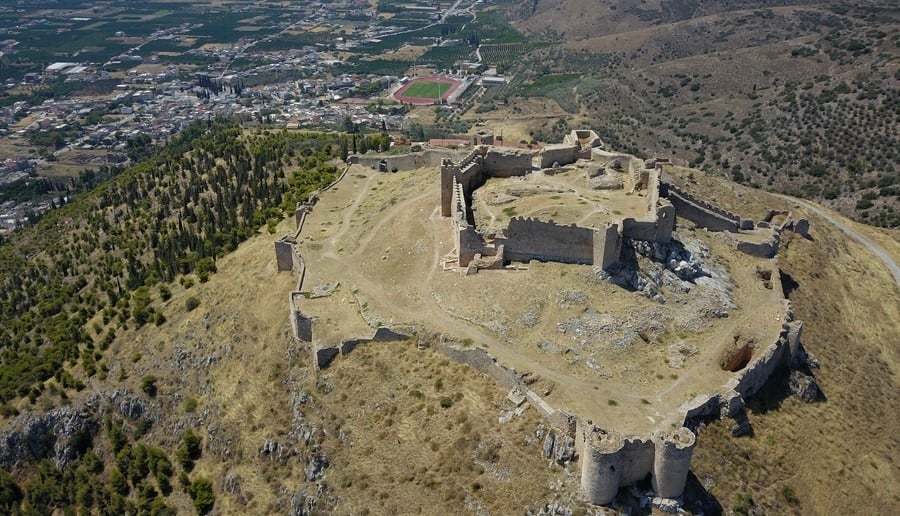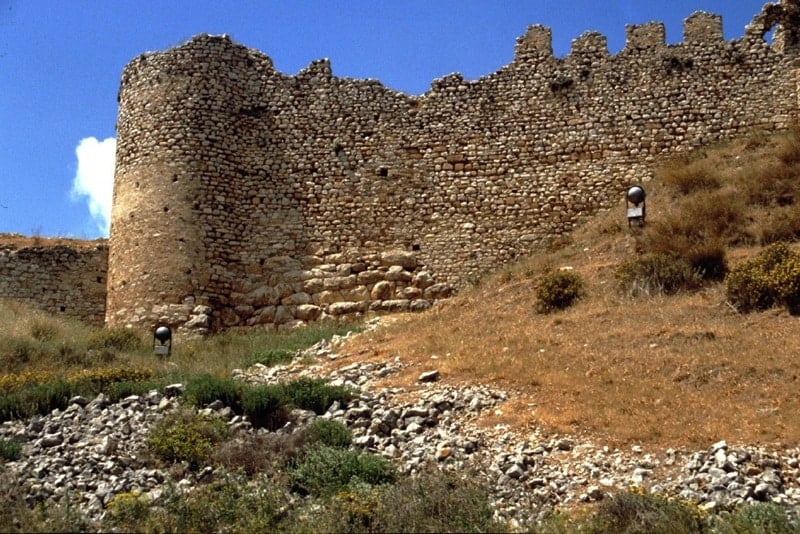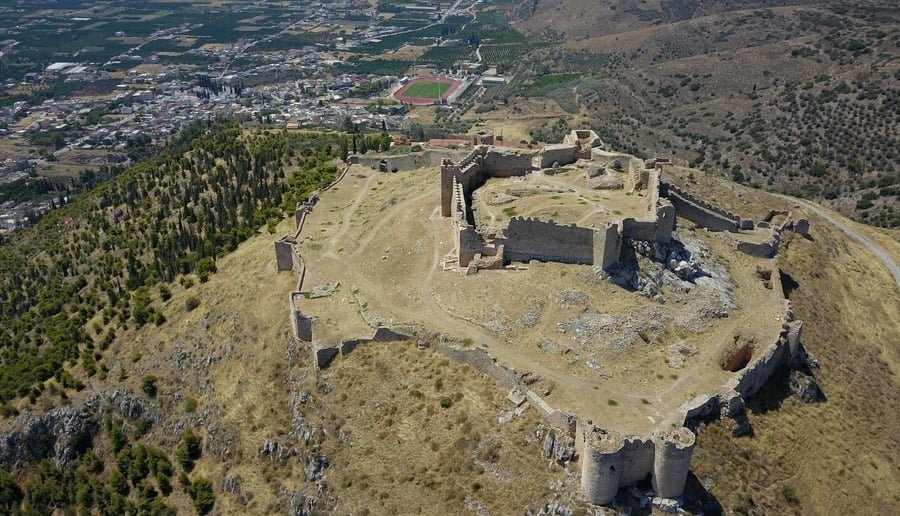
Perched majestically above the modern city of Argos, the ancient Larissa Castle stands as a silent, yet powerful, testament to over three millennia of Greek history. From its origins as a Mycenaean stronghold to its pivotal role in the Greek War of Independence, this formidable fortress has witnessed and shaped, the destiny of the Argolid plain.
Today, while temporarily undergoing restoration, the castle’s imposing walls whisper tales of powerful kings, strategic battles, and the continuous ebb and flow of civilizations that have sought to command this strategically vital location.
The roots of Larissa Castle stretch deep into the past, long before the classical era. As early as the Mycenaean period, around 1800 BC (or the 13th century BC), the Larissa Hill was recognized for its defensive advantages. Remnants of massive “Cyclopean” walls, characteristic of that ancient civilization, are still discernible, forming the very foundation upon which subsequent layers of history were built. This early fortification laid the groundwork for what would become a cornerstone of regional power.
As the centuries progressed, the castle continued its evolution. The Argives in the 5th and 6th centuries B.C. undertook significant repairs and expansions, solidifying its role as a crucial defensive outpost for the burgeoning city. Evidence of Roman occupation further underscores its enduring strategic value through antiquity.
The Argos Castle in the Byzantine and Crusader periods
The Byzantine Empire, recognizing its importance, erected a new castle between the 10th and 12th centuries AD, transforming Larissa into a vital Byzantine bulwark in the Peloponnese. However, the landscape of power was ever-shifting. Following the tumultuous Fourth Crusade in the 13th century, the castle fell under Frankish rule.

It was during this period that much of the castle’s current form took shape, with the addition of new towers and bastions that reflect the architectural styles of the Crusader states.
The late medieval and early modern periods saw Larissa Castle become a pawn in the relentless struggle for control over Greece. It repeatedly changed hands between the formidable Venetian Republic and the powerful Ottoman Empire. Each new conqueror left their mark, reinforcing the walls with cylindrical towers designed to withstand the increasingly destructive power of gunpowder.
A heroic chapter in the Greek War of Independence
Perhaps one of its most heroic chapters unfolded during the Greek War of Independence in 1821. In 1822, under the leadership of Dimitrios Ypsilantis, a force of 700 determined Greek fighters occupied the castle. They bravely held off the superior Ottoman forces led by Dramalis Pasha for approximately 15 days.
This critical delay proved instrumental, buying precious time for Theodoros Kolokotronis to assemble his forces, ultimately leading to the decisive Greek victory at Dervenakia. The walls of Larissa Castle, scarred but standing, became a symbol of Greek resilience and a turning point in their fight for freedom.
Today, visitors, though currently unable to fully explore due to ongoing restoration, can still appreciate the immense historical weight of Larissa Castle. Its two main yards, reinforced by a variety of towers, hint at its complex defensive architecture.
Archaeological findings within its grounds, including the remains of a 12th-century Byzantine temple and ancient Greek sanctuaries, offer tantalizing glimpses into the diverse spiritual and daily lives of its former inhabitants.
Larissa Castle is more than just a ruin; it is a living chronicle, a layered testament to the enduring spirit of Argos and the broader sweep of Greek history, forever standing as a sentinel over the land it has protected for millennia.


